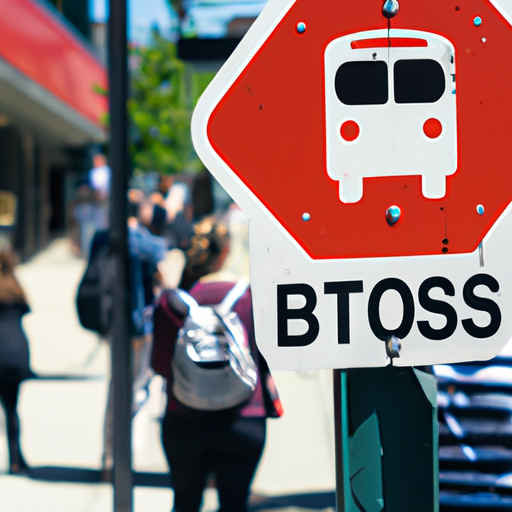
How Do I Handle Transportation In Cities With Complex Or Unfamiliar Road Systems?
Navigating through cities with complex or unfamiliar road systems can be quite a daunting task. From confusing intersections to overwhelming traffic, it’s easy to feel overwhelmed and lost. However, fear not! In this article, we’ll explore some practical tips and tricks to help you confidently handle transportation in these challenging urban landscapes. So, buckle up and get ready to conquer those tricky city roads like a seasoned pro!
1. Public Transportation Options
In cities with complex or unfamiliar road systems, public transportation can be a lifesaver. Not only does it provide a convenient and affordable way to get around, but it also eliminates the stress of navigating unfamiliar streets and finding parking. Fortunately, cities usually have a range of public transportation options to choose from, including buses, trains, trams, subways, and light rail.
1.1 Buses
Buses are one of the most common forms of public transportation in cities. They offer extensive coverage and frequent service, making them a reliable choice for getting from point A to point B. Buses usually operate on fixed routes, with designated stops along the way. To find the nearest bus stop, you can consult a local transportation map or use a navigation app. When waiting for a bus, make sure to check the route number and destination displayed on the bus to ensure it is going in the right direction.
1.2 Trains
Trains are another popular mode of public transportation, especially in larger cities. They provide a fast and efficient way to travel longer distances within the city and even beyond. Trains often have multiple stops within the city, allowing you to reach various neighborhoods and attractions. Similar to buses, train routes are usually well-marked and displayed at each station. Pay attention to the train schedule and plan your journey accordingly. Trains can be an excellent option for avoiding traffic congestion and reaching your destination in a timely manner.
1.3 Trams
Trams, also known as streetcars, are a common form of public transportation in some cities. They run on tracks embedded in the road and often share the road with other vehicles. Trams are especially popular in historic or tourist areas, where they offer a scenic and nostalgic way to explore the city. Like buses and trains, trams have designated stops that are clearly marked along the route. Look for tram signs and wait at the appropriate stop to catch a tram.
1.4 Subways
Subways, or underground trains, are prevalent in many metropolitan areas. They provide a rapid and efficient way to travel across the city, usually with minimal traffic delays. Subways are particularly useful for navigating through densely populated areas and avoiding surface-level congestion. Stations are typically well-signposted, making it easy to find your way around. Pay attention to the subway lines and transfer points, as they can help you plan your route and reach your destination seamlessly.
1.5 Light Rail
Light rail systems, similar to trams, operate on street-level tracks but often have dedicated lanes separate from regular traffic. They offer a combination of the convenience of buses and the speed of trains. Light rail systems can be found in many cities, connecting various neighborhoods and suburbs. Keep an eye out for light rail stops, which are typically marked with signs or shelters. Light rail can be an excellent option for exploring areas beyond the city center and reaching destinations not easily accessible by other modes of public transportation.
2. Ride-Sharing Services
If public transportation doesn’t suit your needs or preferences, ride-sharing services provide a convenient alternative. Ride-sharing services like Uber, Lyft, Didi, and Grab have gained popularity in recent years, offering on-demand transportation at the touch of a button.
2.1 Uber
Uber is a widely recognized and widely available ride-sharing service in many cities worldwide. The Uber app connects riders with registered drivers who provide transportation in their own vehicles. Simply download the app, enter your destination, and wait for a driver to pick you up. Uber offers various vehicle options, including standard cars, SUVs, and even luxury vehicles. Payment is handled through the app, eliminating the need for cash or card transactions.
2.2 Lyft
Lyft is another popular ride-sharing service that operates similarly to Uber. It provides a convenient way to request a ride and get to your destination. The Lyft app allows you to choose from various vehicle categories, including shared rides, regular Lyft cars, and larger Lyft XL vehicles. Like Uber, Lyft app handles the payment process electronically, making it a seamless and cashless experience.
2.3 Didi
Didi, known as “China’s Uber,” is a leading ride-sharing service primarily operating in China. It offers a comparable service to Uber and Lyft, allowing you to request rides through their app. Didi provides different types of vehicles to suit your needs, from standard sedans to luxury cars. The app also offers features like advanced booking and carpooling options, enhancing flexibility and affordability.
2.4 Grab
Grab is a prominent ride-sharing service in Southeast Asia, encompassing countries like Singapore, Malaysia, Thailand, and the Philippines. The Grab app enables users to book rides quickly and easily. Similar to other ride-sharing services, Grab offers various vehicle choices, including economy cars, premium vehicles, and even motorbike taxis in some areas. With Grab, you can get around efficiently and comfortably in these bustling cities.
3. Taxi Services
If you prefer a more traditional approach to transportation, taxis are a reliable option in cities with complex or unfamiliar road systems. Taxis can be found at designated taxi stands or hailed from the side of the road, depending on the city’s regulations.
3.1 Hailing Taxis
In some cities, hailing taxis is a common practice. To hail a taxi, simply stand on the side of the road and look for passing taxis with their rooftop “for hire” signs illuminated. Signal to the driver that you need a ride by raising your hand. Once the taxi stops and you get in, communicate your destination to the driver, and they will take you there using their local knowledge. It’s always a good idea to have your destination written down or saved on your phone in case there are any language barriers.
3.2 Taxi Apps
In many cities, taxi-hailing apps have become increasingly popular, providing a more streamlined experience. These apps allow you to request a taxi and track its arrival in real-time. Services like MyTaxi, Gett, and Curb are examples of taxi-hailing apps available in various cities. Simply download the app, set your pickup location, and wait for a nearby taxi to be assigned to you. Taxi apps often offer additional features such as estimated fare calculations, driver ratings, and the ability to pay through the app.
3.3 Pre-arranged Taxis
Some cities have pre-arranged taxi services that can be booked in advance. These services operate similarly to other transportation apps, allowing you to schedule a taxi pickup at a specific time and location. This method ensures that you have a taxi waiting for you when you need it, particularly useful for catching early morning flights or attending important appointments. Pre-arranged taxis can usually be booked through dedicated apps or by calling a central dispatch number.
4. Bike-Sharing Programs
Bike-sharing programs have gained popularity in many cities as a sustainable and healthy transportation option. These programs provide bicycles for short-term rentals, allowing you to explore the city at your own pace.
4.1 How to Find and Use Bike-Sharing Bikes
To find and use bike-sharing bikes, you should first locate the nearest bike-sharing station. Many cities have dedicated bike-sharing stations scattered throughout their urban areas. These stations typically have racks with bikes available for rent. Some bike-sharing programs have dedicated apps or websites that display real-time information about bike availability and the location of available stations. Once you find a bike, simply follow the instructions provided to rent it. Usually, you’ll need to use a bike-sharing card or a smartphone app to unlock the bike. After your ride, return the bike to any available station within the program’s service area.
4.2 Benefits of Bike-Sharing Programs
Bike-sharing programs offer several benefits for getting around cities. Firstly, riding a bike allows you to avoid traffic congestion and reach your destination faster in dense urban areas. It also promotes a healthier lifestyle by incorporating physical activity into your daily routines. Furthermore, bike-sharing is an eco-friendly alternative to motorized transportation, reducing carbon emissions and air pollution. Bike-sharing programs are often cost-effective and affordable compared to other transportation options, especially for short trips within the city. Lastly, using a bike allows you to enjoy the scenic views and unique charm of a city at a different pace, providing a memorable experience.
5. Car Rentals
In cities with complex or unfamiliar road systems, renting a car can provide you with flexibility and freedom to explore at your own pace. Car rental services are widely available in urban areas, and there are various factors to consider when renting a car.
5.1 Finding Car Rental Services
Finding car rental services is usually easy in major cities. Many car rental companies have branches located at airports, train stations, or in downtown areas. Online platforms and travel websites can also help you compare different car rental options and find the one that suits your needs and budget. Make sure to familiarize yourself with the rental company’s policies, including age requirements, insurance options, and any additional fees or charges.
5.2 Navigating Unfamiliar Road Systems with GPS
Navigating unfamiliar road systems can be challenging, but having a GPS system can make it much easier. Most rental cars come equipped with GPS devices as standard or have the option to rent one at an additional cost. GPS systems provide turn-by-turn directions, voice guidance, and real-time traffic updates, allowing you to navigate confidently through the city. Before driving, familiarize yourself with the basic operation of the GPS system, including entering your destination and selecting the appropriate settings.
6. Walking
Walking is an often overlooked but incredibly convenient mode of transportation in cities. It allows you to immerse yourself in the local culture, discover hidden gems, and take in the sights and sounds of the city.
6.1 Exploring the City on Foot
Exploring the city on foot is a fantastic way to experience its true essence. Walking enables you to observe the details of the architecture, witness the local lifestyle, and stumble upon charming cafes, shops, and parks. Prioritize comfortable footwear for long walks and consider the weather forecast to ensure you’re adequately dressed. With a bit of curiosity and a sense of adventure, walking can turn even the most complex road systems into a delightful journey.
6.2 Utilizing Pedestrian Maps
In cities with complex road systems, utilizing pedestrian maps can greatly enhance your walking experience. Many cities offer free maps specifically designed for pedestrians, highlighting walking routes, landmarks, and points of interest. These maps are often available at tourist information centers, hotels, or can be downloaded from the city’s official website. By following pedestrian maps, you can navigate through the city efficiently and discover local attractions that might be off the beaten path.
7. Local Guides and Tourist Information Centers
When faced with a complex road system, seeking assistance from locals and utilizing tourist information centers can provide valuable insights and guidance.
7.1 Seeking Assistance from Locals
Locals are often the best resource for navigating city road systems. Don’t hesitate to approach friendly residents and ask for directions or recommendations. Most people are happy to help and share their knowledge of the area. Strike up a conversation, explain your destination or point of interest, and locals can provide you with expert advice and shortcuts. Engaging with locals not only improves your navigation skills but also offers an opportunity to connect with the community and learn more about the city’s culture.
7.2 Visiting Tourist Information Centers
Tourist information centers are invaluable resources for travelers in cities with complex road systems. These centers provide a wealth of information, including maps, brochures, and guides. Knowledgeable staff members can offer suggestions for transportation routes, the best sights to visit, and even insider tips on avoiding common tourist pitfalls. Whenever you arrive in a new city, make it a priority to visit the local tourist information center to gather the necessary information and prepare yourself for a smooth and enjoyable journey.
8. Offline Maps and Navigation Apps
In today’s digital age, offline maps and navigation apps are indispensable allies for travelers in unfamiliar cities.
8.1 Downloading and Using Offline Maps
Offline maps are particularly useful when you don’t have access to reliable internet connections or want to conserve data usage. Before arriving in a city, download offline maps for that specific area using your preferred map app. Applications like Google Maps, Here WeGo, and Maps.me offer offline map options. Once downloaded, you can access the maps without an internet connection. Offline maps allow you to navigate through the city, search for specific addresses, and get directions, ensuring you never get lost in a complex road system.
8.2 Utilizing Navigation Apps
Navigation apps have revolutionized city travel, making it easier than ever to navigate complex road systems. Apps like Google Maps, Waze, and Apple Maps provide turn-by-turn directions, real-time traffic updates, and alternate route suggestions. Simply input your destination, and the app will guide you step by step, ensuring you stay on the right track. Navigation apps also offer additional features like estimated arrival times, nearby points of interest, and even public transportation directions. With the help of navigation apps, even the most complex road systems become manageable and stress-free.

9. City Tours and Hop-On Hop-Off Buses
If you prefer a guided experience or want to explore multiple attractions with ease, city tours and hop-on hop-off buses can be ideal options.
9.1 Joining Guided City Tours
Guided city tours provide a structured way to explore the city’s key attractions and learn about its history and culture. These tours are typically led by knowledgeable guides who share fascinating insights and stories along the way. City tours can take various forms, such as walking tours, bus tours, or even bike tours. Choose a tour that aligns with your interests and budget. Joining a guided city tour allows you to sit back, relax, and let the experts navigate the complex road systems on your behalf.
9.2 Using Hop-On Hop-Off Buses
Hop-on hop-off buses are a popular option in many tourist destinations. These buses follow a predetermined route, making stops at major attractions and landmarks throughout the city. The concept is simple: you board the bus at any designated stop, and you can hop off at any attraction you wish to explore. Once you’re ready to move on, another bus will come along to pick you up. Hop-on hop-off buses offer the added advantage of informative audio commentary, providing interesting facts about the city and its landmarks during your journey. This hassle-free option ensures you don’t have to worry about driving or navigating complicated road systems while still enjoying the city’s highlights.
10. Research and Planning
Before traveling to a city with a complex or unfamiliar road system, conducting research and planning is essential to ensure a smooth transit experience.
10.1 Familiarize Yourself with the City Layout
Start by familiarizing yourself with the city layout before your trip. Study maps, both online and offline, to understand the main roads, highways, and neighborhoods. Identify the areas you intend to visit and have a general understanding of how they connect to the rest of the city. Pay attention to major landmarks, transportation hubs, and intersections that can serve as navigational reference points. By grasping the city’s layout in advance, you’ll gain confidence in navigating its complex road systems.
10.2 Study Public Transportation Routes
If you plan to primarily use public transportation, take the time to study the available routes and networks. Most cities provide public transportation maps and schedules, either in print or online. Review these resources to understand which modes of public transportation serve your desired destinations. Note down important stations, transfer points, and the frequency of service. Familiarizing yourself with the public transportation routes and timetables allows you to efficiently navigate the city’s complex road systems and plan your trips effectively.
By utilizing the various transportation options available, conducting thorough research, and planning accordingly, you can confidently handle transportation in cities with complex or unfamiliar road systems. Whether you opt for public transportation, ride-sharing services, taxis, bike-sharing programs, car rentals, or simply walking, there are plenty of ways to explore and enjoy the vibrant atmosphere of any city. Remember to be flexible, open to new experiences, and prepared to navigate through the complexity of city streets. With the right approach and a bit of adventure, you can make the most of your urban travel experience.







